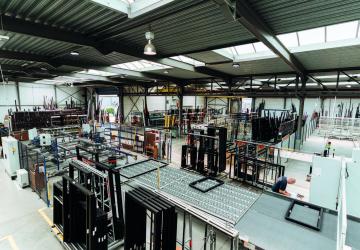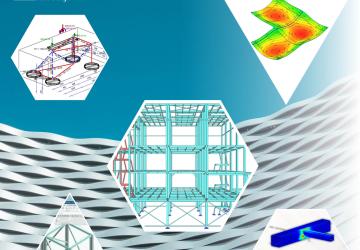As you know, our software is designed to keep you at the forefront of structural engineering best practices, and that includes staying up-to-date with the latest Eurocode standards. With the release of NEN-EN 1990:2025, "Eurocode - Basis of structural and geotechnical design", it's crucial to understand the key changes compared to the 2002 version. This article will provide a clear overview of these updates, enabling you to leverage our software effectively and ensure compliance with the newest standards.
Key Differences Between NEN-EN 1990:2025 and NEN-EN 1990:2002
1. Extended Scope
- Inclusion of provisions for bearings (page 8)
The 2025 version explicitly includes provisions for the design of structural bearings. This is a significant addition, offering comprehensive guidance on a critical component often used in bridge design. This may affect the overall calculations on the bridge structure depending on what kind of bearing is being used and where it will be installed.
2. Improved Verification for Safety Factors
- Improved approach for ULS verification (page 48)
The updated norm features a refined methodology for verifying ultimate limit states (ULS), potentially leading to more efficient and reliable designs. The major changes can be seen in the new formulas which allow for a different approach to be able to verify against the ULS
- Improved provisions on robustness (page 148)
The update norm offers better guidance on ensuring structural robustness, helping to prevent disproportionate damage in the event of unforeseen events.
3. Specific Design Considerations
- Improved provisions on fatigue verification (page 45)
The updated code provides clearer guidance on fatigue verification, essential for structures subjected to cyclic loading. Make sure to check with the values of EN 1992 to EN 1999. - Improved provision for basis of design for geotechnical structures (page 59)
The NEN-EN 1990:2025 aligns more closely with EN 1997 (Geotechnical Design), promoting consistency between structural and geotechnical aspects of design.
4. New Concepts and Considerations
- Inclusion of provisions on sustainability (page 35)
Reflecting the growing emphasis on sustainable construction, the 2025 version incorporates provisions for considering sustainability in structural design. This encourages designers to minimize the environmental impact of their projects. In section 4.7 of page 35 it states that the impact should be taken in to account. - Improved guidance on reliability analysis and code calibration (page 119)
The new standard provides enhanced guidance on reliability analysis and code calibration, offering a more robust framework for ensuring structural safety.
5. Serviceability Limit State (SLS)
- Improved guidance for SLS verifications of buildings (page 50)
The updated Eurocode includes improved guidance for serviceability limit state (SLS) verification of buildings, specifically related to deflection limits, vibrations, and foundation movements. For example, the maximum allowed vertical deflections in Table A.1.10 can lead to a great result if designed well from the first calculations. This however makes a lot more obligations for the engineer to take in to account and to deliver. Also the requirements for the natural frequency are being taken up and is obligated to take in to account as is being given in section A.1.4.4 (Vibrations).
6. Management and Application
- Improved guidance on management and structural reliability (page 115)
NEN-EN 1990:2025 offers better guidance on managing the structural reliability of construction works, promoting a more systematic approach to risk management. This can be reviewed in Annex B (informative) technical management measures for design and execution. - Guidance on verification of vibration on footbridges (page 169)
NEN-EN 1990:2025 incorporates specific guidance on verifying vibration levels in footbridges due to pedestrian traffic, addressing an important serviceability concern. See Annex H in which the new terms are being mentioned such as; traffic classes and dynamic load models.
7. National Annexes
Keep in mind that the National Annex for the Netherlands will define values for Nationally Determined Parameters (NDPs). It's essential to consult this annex alongside NEN-EN 1990:2025 for Dutch projects. Examples include Table A.1.1 (NDP), A.1.7, and A.2.7 (values for ψ0, ψ1, and ψ2).
How Will Our Software Help?
Our software is being updated to fully support NEN-EN 1990:2025, including:
- Implementation of the new ULS verification approach.
- Updated material models and partial factors.
- Tools to assess structural robustness and sustainability.
- Calculation modules for vibration analysis in footbridges.
We are committed to providing you with the tools you need to design safe, efficient, and compliant structures. Stay tuned for further announcements about specific software updates and training opportunities.
If you have any questions about NEN-EN 1990:2025 or how our software can assist you in your projects, please don't hesitate to contact our support team.




